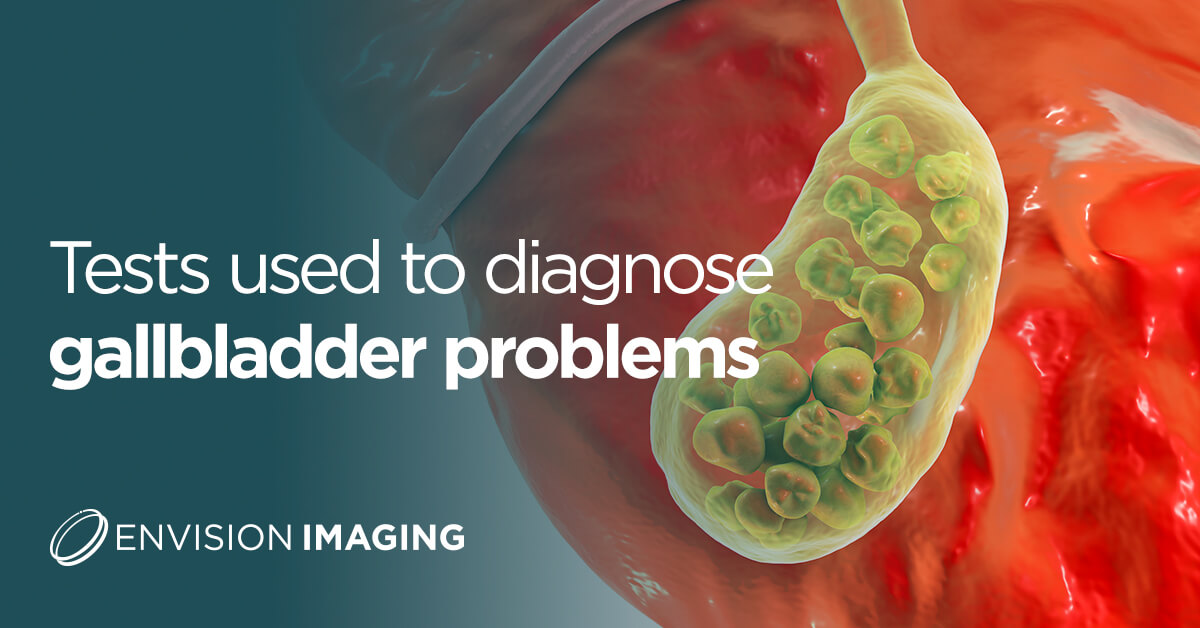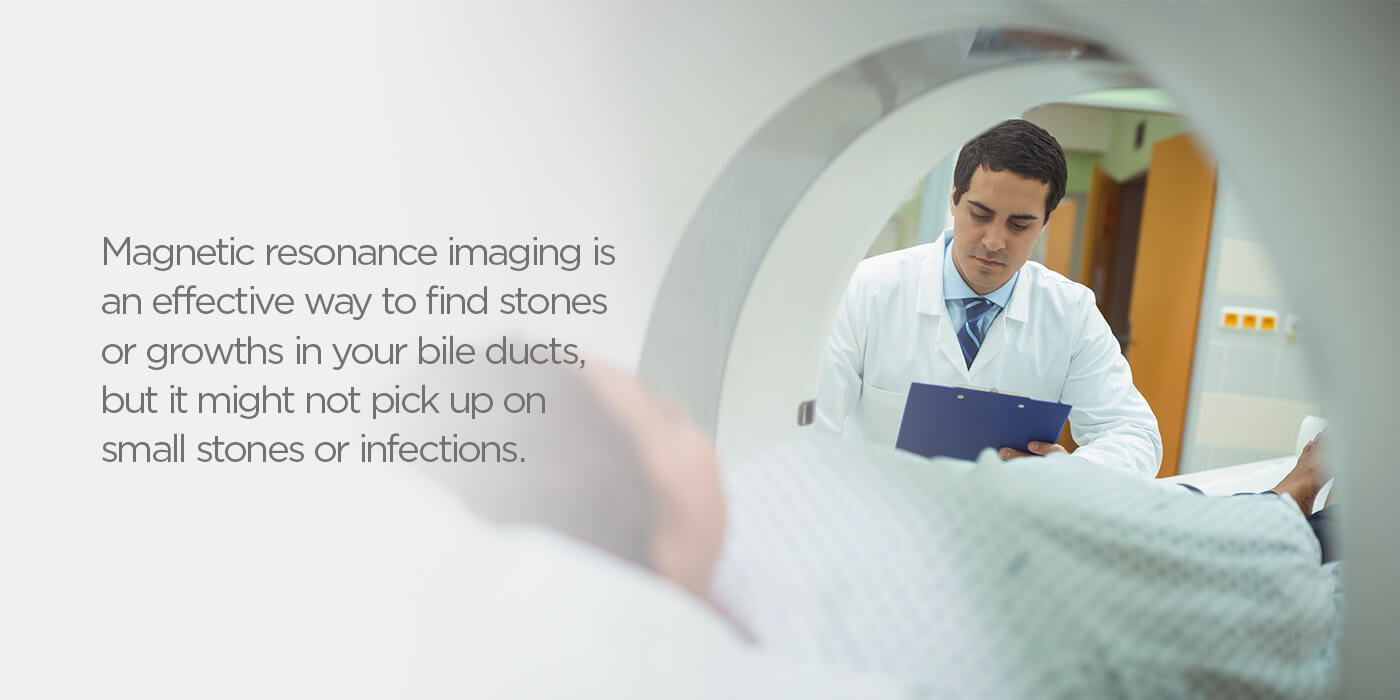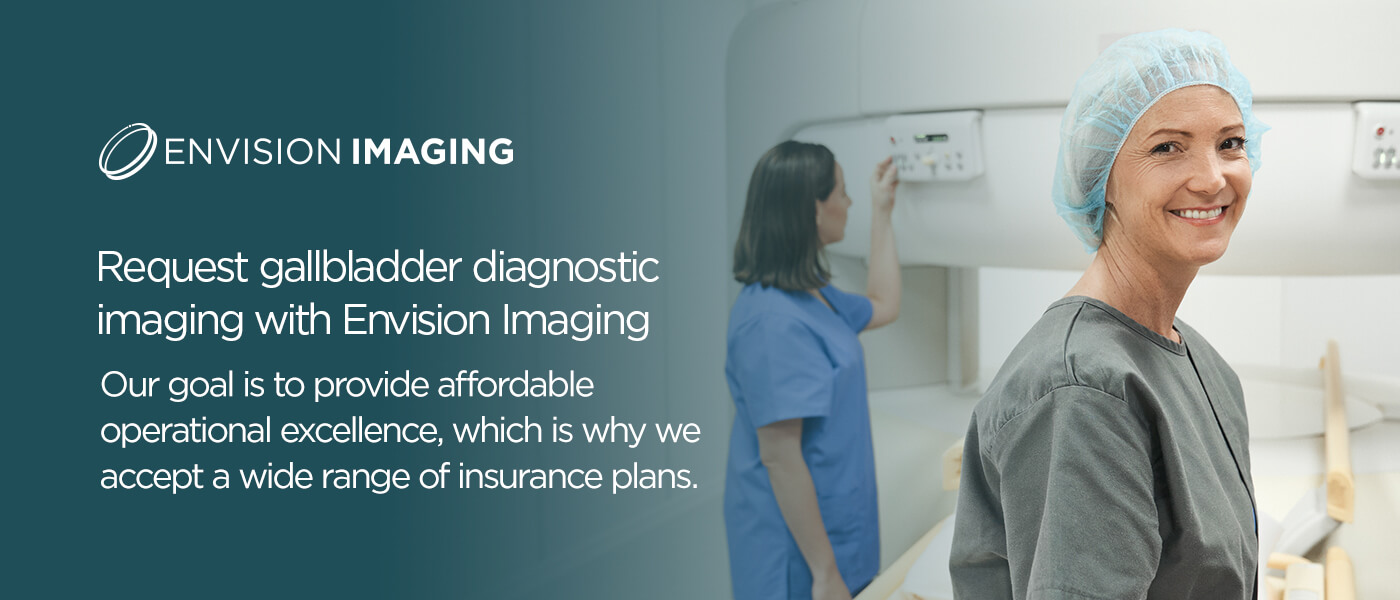Tests used to diagnose gallbladder problems
 Specific signs and symptoms may indicate an issue in your gallbladder. Since the gallbladder is an internal organ, your health professional will most likely order diagnostic imaging tests to identify the problem. Several different tests for gallbladder issues are available depending on the suspected condition. It’s wise to learn about various gallbladder imaging tests — but first, you’ll need to understand what your gallbladder is and what concerns are possible.
Jump to Sections:
Specific signs and symptoms may indicate an issue in your gallbladder. Since the gallbladder is an internal organ, your health professional will most likely order diagnostic imaging tests to identify the problem. Several different tests for gallbladder issues are available depending on the suspected condition. It’s wise to learn about various gallbladder imaging tests — but first, you’ll need to understand what your gallbladder is and what concerns are possible.
Jump to Sections:
- What is the gallbladder?
- What are potential gallbladder problems?
- Signs of gallbladder problems
- How to test for gallbladder problems
What is the gallbladder?
Your gallbladder is an organ in your abdomen that stores stomach bile. This combination of fluids, fats and cholesterol breaks down the food you eat and allows your bloodstream to absorb vitamins and nutrients. In that way, your gallbladder is a vital part of the digestive process.What are potential gallbladder problems?
Common gallbladder diseases and other issues include the following.- Inflammation: Also called cholecystitis, inflammation can be acute or chronic.
- Gallstones: Gallstones are hardened deposits of cholesterol that can block the gallbladder’s channels or lead to infection. If a gallstone travels into the intestine, it can be life-threatening. Gallstones are common — up to 25 million Americans have this health concern.
- Bile duct infection: If you have a blockage in your bile duct, you may develop an infection.
- Polyps: Polyps are benign growths that pose a risk of developing into cancer.
- Porcelain gallbladder: A porcelain gallbladder has calcium-stiffened walls and can increase the risk of developing cancer.
Signs of gallbladder problems
If you experience one or more of the following symptoms, you could have an issue with your gallbladder:- Severe pain in the right upper abdomen, right side of your chest or back
- Pain after eating, especially after eating high-fat foods
- Fever, along with shaking, chills and abdominal pain
- Indigestion or heartburn
- Nausea or vomiting
- Excess gas
How to test for gallbladder problems
Many different methods are available for gallbladder diagnostics. Your health provider will order various tests depending on the suspected concerns. Typical tests for gallbladder issues include the following, but other tests may also be helpful.Ultrasound
An ultrasound is a form of diagnostic sonography using high-frequency sound waves. It’s a non-invasive and painless way to test for gallbladder problems. It will reveal gallstones, including tiny ones. However, it is not a preferred method for diagnosing inflammation-related issues. Before you undergo an ultrasound for gallbladder issues, the technologist might ask you to fast overnight or longer. For the test, you’ll lie face-up so they can apply a specialized gel to your abdomen. The gel prevents air pockets from forming between the reading device — also called a transducer — and your skin. The technologist will then move the transducer across your abdomen so it can capture images. If the results are unclear, further tests might be necessary.X-ray
An x-ray uses electromagnetic radiation to create black-and-white images of the inside of your body. Your health provider may order an x-ray if they suspect gas buildup, calcified gallstones or porcelain gallbladder concerns. You could need other tests along with an x-ray. The procedure for getting an x-ray can vary. In some cases, you may need to swallow a substance called iopanoic acid or receive it as an injection. The iopanoic acid will become concentrated in your gallbladder. As it mixes with the bile salts, it stands out on an x-ray. However, an x-ray is only helpful for finding calcified gallstones, so you might need other tests to find non-calcified gallstones. Only about 10% of gallstones are calcified.Computed tomography scan
A computer tomography scan can help identify tears in the gallbladder wall or infections. However, other methods are more effective at finding gallstones. A CT scan involves a narrow beam of x-rays rotated around the body. It results in cross-sectional images showing more detailed information than you can achieve with a traditional x-ray. The computer can stack the cross-sections together to create a complete three-dimensional picture. To receive a CT scan, you’ll lie on a bed that will move through a large, round machine. A tube will rotate around you, sending x-rays through your body and transmitting the resulting images to a computer. Each rotation creates one full cross-section. The technologist can observe each two-dimensional cross-section and the entire three-dimensional image to find abnormalities.Magnetic resonance imaging
Another way to identify gallbladder concerns is through magnetic resonance imaging. It’s an effective way to find stones or growths in your bile ducts, but it might not pick up on small stones or infections. In some cases, an MRI can serve as a follow-up test after an ultrasound. An MRI scan is similar to a CT scan. It also creates three-dimensional images, but it uses magnets and radiofrequency rather than x-rays. An MRI generates a magnetic field around your body, which causes the protons in your cells to move. As your protons realign, the MRI machine captures images. You may receive an injection containing the element gadolinium, which makes your protons move faster for a sharper image. During an MRI, you have to stay still to avoid blurring the images. If you have a condition that prevents you from lying still on your back, or if you have an iron-containing implant, an MRI might not be an option for you.What is the best test for gallbladder issues?
The best diagnostic test for gallbladder problems will depend on the concern at hand. If your health professional suspects a gallbladder issue, they might order several different tests. Many patients require multiple tests to verify findings. For example, your doctor might first order an ultrasound, followed by an MRI.Request gallbladder diagnostic imaging with Envision Imaging
If you’re experiencing pain in your upper abdomen, indigestion or other signs of gallbladder issues, you may need to undergo image testing. Most tests are quick, non-invasive and painless. If you require diagnostic imaging, consider Envision Imaging. We offer world-class imaging services with individualized and compassionate care. Our goal is to provide affordable operational excellence, which is why we accept a wide range of insurance plans. At Envision Imaging, we understand the circumstances surrounding diagnostic imaging can be stressful. We always focus on providing a pleasant experience along with our quality care. Learn more about our services, and browse our locations to request your next diagnostic imaging appointment. Our world-class facilities, compassionate care and accurate results ensure a pleasant and reliable experience.Call To Schedule Your Appointment
Sources:- https://www.ncbi.nlm.nih.gov/books/NBK470366/ x2
- https://www.envrad.com/services/ultrasound-sonogram/
- https://www.envrad.com/services/x-ray/
- https://www.envrad.com/services/ct-scans/
- https://www.nibib.nih.gov/science-education/science-topics/computed-tomography-ct
- https://www.nibib.nih.gov/science-education/science-topics/magnetic-resonance-imaging-mri
- https://www.envrad.com/services/mri-scans/
- https://www.envrad.com/about-us/why-choose-us/
- https://www.envrad.com/locations/




